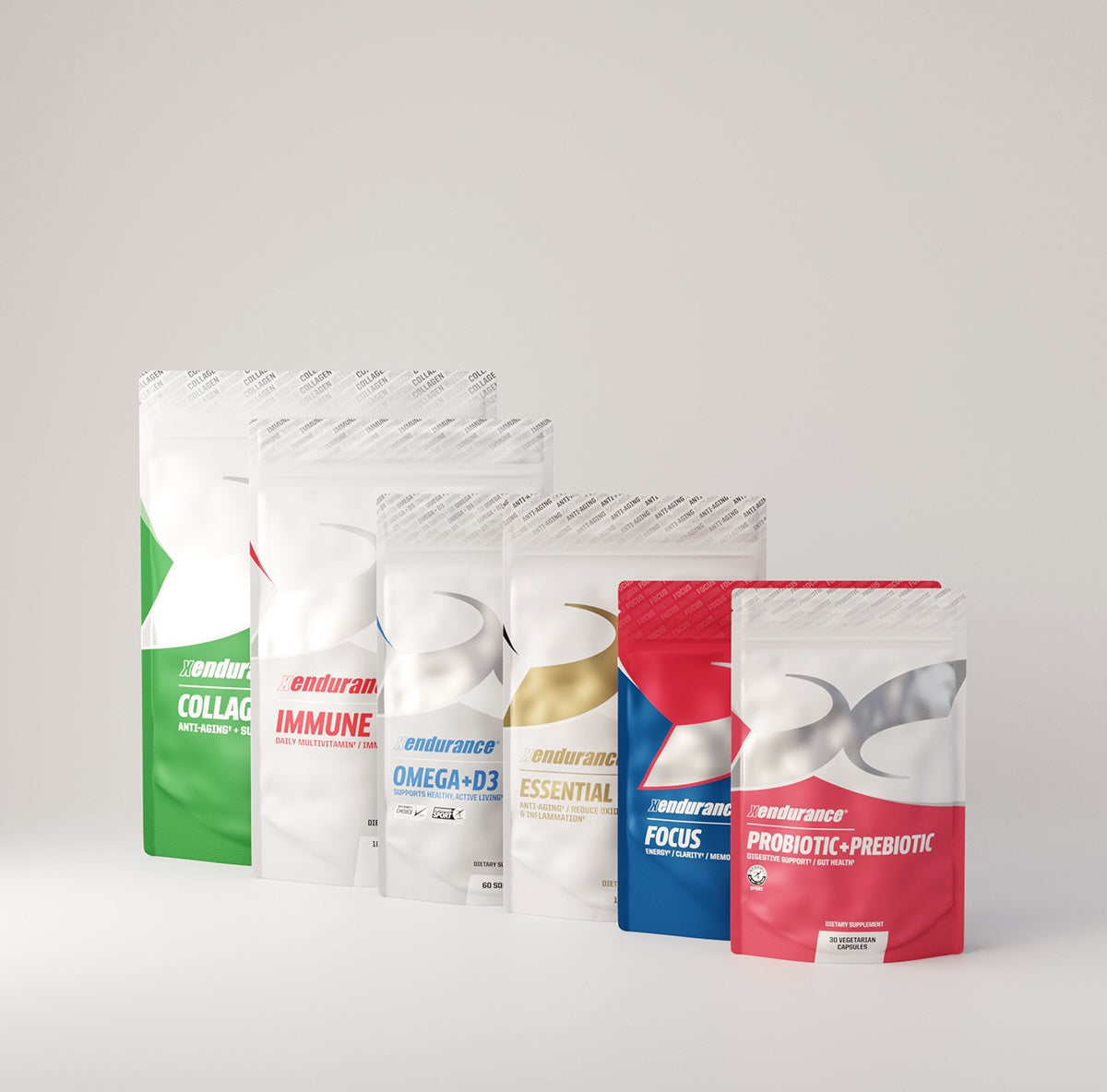Type 2 diabetes is a prevalent and potentially life-altering condition that affects millions of individuals worldwide. While genetics, diet, and lifestyle play significant roles in its development, recent studies suggest that muscle mass may also have a crucial role in determining one's risk for this disease. In this blog post, we will delve into the interesting connection between muscle mass and type 2 diabetes risk factors, with a particular focus on recent research comparing men and women. We will also explore how to increase muscle mass and why women should embrace stronger muscles for their health.
What Is Type 2 Diabetes and Why Do People Get it?
Type 2 diabetes is a chronic metabolic disorder characterized by high levels of blood sugar (glucose) in the body. It is one of the most common forms of diabetes. In type 2 diabetes, the body either doesn't produce enough insulin or becomes resistant to the insulin it does produce. Insulin is a hormone produced by the pancreas that helps regulate blood sugar levels by allowing glucose to enter cells, where it is used for energy.
Several factors can contribute to the development of type 2 diabetes:
- Genetics: Family history plays a role, and some people may have a genetic predisposition to the condition.
- Obesity: Excess body weight, especially around the abdomen, is a significant risk factor. Fat cells, particularly abdominal fat, release chemicals that can disrupt insulin function.
- Inactivity: A sedentary lifestyle can lead to weight gain and muscle weakness, both of which can contribute to insulin resistance.
- Poor Diet: A diet high in refined sugars, saturated and trans fats, and low in fiber can increase the risk of type 2 diabetes.
- Age: The risk of type 2 diabetes increases with age, particularly after the age of 45.
- Medical History: Conditions such as high blood pressure, polycystic ovary syndrome (PCOS), and gestational diabetes can increase the risk.
- Ethnicity: Some ethnic groups, such as African Americans, Hispanics, Native Americans, and Asian Americans, have a higher risk of type 2 diabetes.
- Gestational Diabetes: Women who had gestational diabetes during pregnancy are at a higher risk of developing type 2 diabetes later in life.
Understanding these risk factors for type 2 diabetes can help in taking preventive measures.
It's important to note that while certain factors increase the risk of developing type 2 diabetes, lifestyle modifications such as maintaining a healthy weight, regular physical activity and a balanced diet can significantly reduce the risk and help manage the condition if it develops.
Muscle Mass and Type 2 Diabetes: A Recent Study
Recent research has brought into focus the relationship between muscle mass and type 2 diabetes risk. A study in 2023 examined data from a large cohort of Chinese participants to investigate this connection, shedding light on its implications for both men and women.
The study analyzed the muscle mass of over 40,000 participants, divided into two groups: men and women. A measurement called pSMI was used to figure out how much muscle the participants had in their bodies. Then, they looked at blood sugar levels and asked about past medical history to see if they'd recently developed diabetes. The results showed a clear inverse relationship between muscle mass and the risk of developing type 2 diabetes, with higher muscle mass associated with a lower risk of the disease.
Men vs. Women: Muscle Mass and Type 2 Diabetes
Interestingly, the study also found differences between men and women concerning the impact of muscle mass on type 2 diabetes risk. In general, both men and women benefited from higher muscle mass in terms of reduced diabetes risk. However, the magnitude of this benefit appeared to vary between the sexes.
The researchers found that having more muscle seems to be linked to a reduced risk of developing type 2 diabetes in men with less muscle and all women.
For men, these results align with previous research suggesting that men with greater muscle mass tend to have improved glucose metabolism and insulin sensitivity.
This finding suggests that muscle mass can be a valuable factor in reducing type 2 diabetes risk for both genders, although the degree of protection may vary.
Increasing Muscle Mass
Now that we understand the positive relationship between muscle mass and type 2 diabetes risk, it's essential to explore how individuals, regardless of their gender, can increase their muscle mass. Building muscle is a gradual process that requires a combination of exercise, nutrition, and consistency. Here are some key strategies to help you build muscle mass fast:
- Strength Training: Engaging in resistance exercises such as weightlifting, bodyweight exercises, and resistance band workouts is essential for building muscle. These activities stimulate muscle growth by causing small tears in muscle fibers, which then repair and grow stronger.
- Progressive Overload: To continue building muscle, it's crucial to progressively increase the resistance or intensity of your workouts over time. This could involve lifting heavier weights, performing more repetitions, or increasing the difficulty of bodyweight exercises.
- Proper Nutrition: A balanced diet that includes an adequate amount of protein is essential for muscle growth. Protein provides the amino acids necessary for muscle repair and growth. Make sure to also consume enough calories to support muscle development.
- Rest and Recovery: Muscles need time to recover and grow. Ensure you get enough sleep and allow your muscles to rest between workout sessions. Overtraining can hinder muscle growth and increase the risk of injury.
- Consistency: Building muscle takes time and consistency. Stick to your workout routine and nutrition plan to see long-term results.
Why Women Should Embrace Stronger Muscles
In light of the recent study and the evidence supporting the positive impact of muscle mass on reducing type 2 diabetes risk, it's crucial for women to embrace the idea of building stronger muscles. Here are some compelling reasons why women should prioritize muscle development:
- Improved Insulin Sensitivity: As the study indicated, higher muscle mass can enhance insulin sensitivity, which is crucial for maintaining stable blood sugar levels. This benefit is particularly important for women, as they are at risk for insulin resistance, a precursor to type 2 diabetes.
- Enhanced Metabolism: Muscle tissue is metabolically active, meaning it burns more calories at rest than fat tissue. By increasing muscle mass, women can boost their metabolism, making it easier to maintain a healthy weight and manage body composition.
- Stronger Bones: Resistance training not only builds muscle but also strengthens bones. This is especially important for women, as they are more susceptible to osteoporosis, a condition characterized by weak and brittle bones.
- Functional Strength: Building muscle enhances overall strength and physical function. This can improve daily activities and quality of life, making it easier to perform tasks like carrying groceries, lifting children, or participating in recreational activities.
- Body Confidence: Embracing stronger muscles can boost self-esteem and body confidence. Many women report feeling empowered and proud of their physical accomplishments when they achieve greater strength.

Can Supplements Help Increase Muscle Mass In Women?
Certain lean muscle growth supplements can indeed help women increase their muscle mass when incorporated into a well-balanced fitness and nutrition regimen. One of the most widely recognized supplements for muscle growth is protein powder. in particular, is popular among both men and women because it provides a convenient source of high-quality protein that supports muscle repair and growth. Women can use protein shakes or smoothies as post-workout snacks to promote muscle recovery.
Additionally, branched-chain amino acids (BCAAs) are another valuable supplement. BCAAs, including leucine, isoleucine, and valine, are essential amino acids that play a crucial role in muscle protein synthesis. Supplementing with BCAAs can help women reduce muscle soreness, enhance exercise performance, and ultimately contribute to increased muscle mass.
Creatine is another supplement that can be beneficial for women aiming to build muscle. It is a naturally occurring compound found in small amounts in foods like red meat and fish, but supplementation can help ensure an adequate intake. Creatine works by increasing the body's ATP (adenosine triphosphate) levels, providing more energy for high-intensity workouts. This additional energy can lead to improved strength and performance during resistance training, helping women lift heavier weights and stimulate greater muscle growth.
Muscle Up to Fight Diabetes: The Power of Lean Body Mass
The recent study examining the relationship between muscle mass and type 2 diabetes risk has provided valuable insights into the importance of muscle development for both men and women. Higher muscle mass has been associated with a reduced risk of type 2 diabetes, with the protective effect observed in both genders, albeit to varying degrees.
To increase muscle mass, individuals can engage in strength training exercises, maintain a balanced diet, ensure proper rest and recovery, and stay consistent with their fitness routines. Women, in particular, should embrace the idea of building stronger muscles to improve insulin sensitivity, boost metabolism, strengthen bones, enhance physical function, and cultivate body confidence.
Ultimately, this research underscores the importance of maintaining a healthy body composition, not just for aesthetics but also for overall health and well-being. By embracing the benefits of stronger muscles, individuals can take proactive steps towards reducing their risk of type 2 diabetes and enjoying a more active and fulfilling life.









Leave a comment
This site is protected by hCaptcha and the hCaptcha Privacy Policy and Terms of Service apply.